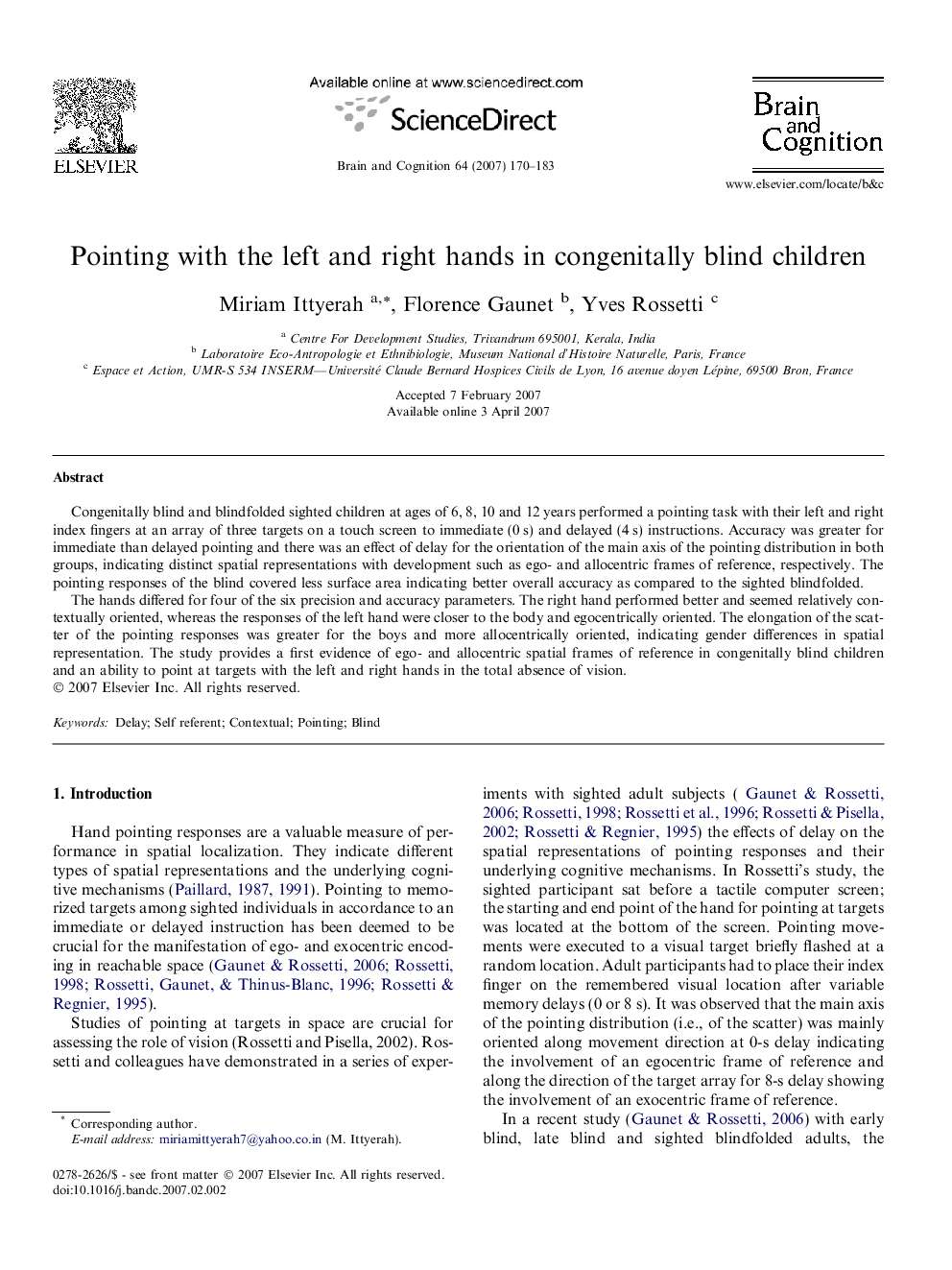| Article ID | Journal | Published Year | Pages | File Type |
|---|---|---|---|---|
| 924614 | Brain and Cognition | 2007 | 14 Pages |
Congenitally blind and blindfolded sighted children at ages of 6, 8, 10 and 12 years performed a pointing task with their left and right index fingers at an array of three targets on a touch screen to immediate (0 s) and delayed (4 s) instructions. Accuracy was greater for immediate than delayed pointing and there was an effect of delay for the orientation of the main axis of the pointing distribution in both groups, indicating distinct spatial representations with development such as ego- and allocentric frames of reference, respectively. The pointing responses of the blind covered less surface area indicating better overall accuracy as compared to the sighted blindfolded.The hands differed for four of the six precision and accuracy parameters. The right hand performed better and seemed relatively contextually oriented, whereas the responses of the left hand were closer to the body and egocentrically oriented. The elongation of the scatter of the pointing responses was greater for the boys and more allocentrically oriented, indicating gender differences in spatial representation. The study provides a first evidence of ego- and allocentric spatial frames of reference in congenitally blind children and an ability to point at targets with the left and right hands in the total absence of vision.
